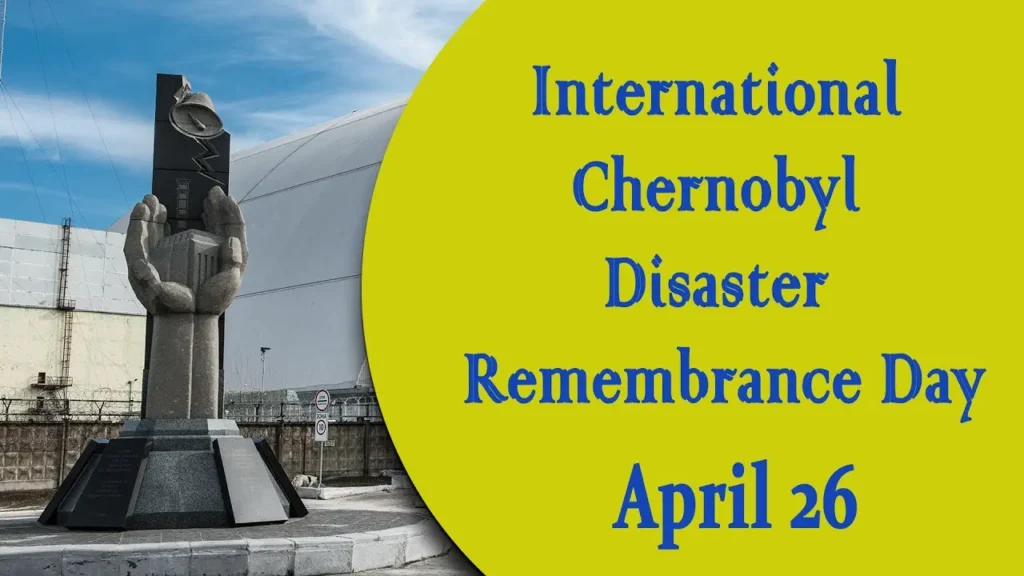Commemorating International Chernobyl Disaster Remembrance Day 2024
The International Chernobyl Disaster Remembrance Day is observed every year on April 26th to remember the catastrophic nuclear accident that occurred at the Chernobyl Nuclear Power Plant in Ukraine in 1986. This year, on the 38th anniversary of the disaster, nations around the world are solemnly reflecting on the tragic event and its lasting impact.

Why this News is Important:
Title: Significance of International Chernobyl Disaster Remembrance Day
1. Reflecting on Human Tragedy: The Chernobyl disaster stands as one of the most devastating nuclear accidents in history, causing immense human suffering and loss. Remembering this event is crucial to honor the lives lost and the countless individuals affected by the aftermath.
2. Highlighting Environmental Consequences: The Chernobyl disaster not only resulted in immediate casualties but also led to long-term environmental repercussions. It serves as a stark reminder of the potential dangers associated with nuclear power and the importance of stringent safety measures.
3. Emphasizing the Importance of Nuclear Safety: The anniversary of the Chernobyl disaster underscores the need for continuous efforts to enhance nuclear safety standards worldwide. It serves as a wake-up call for governments and regulatory bodies to prioritize safety protocols and prevent similar disasters in the future.
4. Promoting Awareness and Education: Observing International Chernobyl Disaster Remembrance Day helps raise awareness among the public, especially students preparing for government exams. Understanding the causes and consequences of such disasters is essential for informed decision-making and policymaking in various sectors.
5. Encouraging International Cooperation: The Chernobyl disaster transcended national boundaries, impacting neighboring countries and prompting international assistance and cooperation. Commemorating this event fosters solidarity among nations in addressing global challenges, including nuclear safety and disaster management.
Historical Context:
Title: Background of the Chernobyl Disaster
The Chernobyl disaster occurred on April 26, 1986, during a late-night safety test at the Chernobyl Nuclear Power Plant in Pripyat, Ukraine, then part of the Soviet Union. Due to a combination of design flaws and operator error, Reactor 4 experienced a catastrophic explosion, releasing a massive amount of radioactive material into the atmosphere.
Key Takeaways from “International Chernobyl Disaster Remembrance Day 2024”
| Serial Number | Key Takeaway |
|---|---|
| 1 | April 26th marks the International Chernobyl Disaster Remembrance Day, commemorating the tragic nuclear accident in 1986. |
| 2 | The event highlights the human tragedy, environmental consequences, and the importance of nuclear safety measures. |
| 3 | Observing this day promotes awareness, education, and international cooperation in addressing nuclear safety concerns. |
| 4 | The Chernobyl disaster serves as a reminder of the need for continuous efforts to prevent similar incidents and mitigate their impact. |
| 5 | Understanding the historical context and key takeaways from the disaster is crucial for students preparing for government exams. |
Important FAQs for Students from this News
What caused the Chernobyl disaster?
Answer: The Chernobyl disaster was caused by a combination of design flaws and operator error during a safety test at the Chernobyl Nuclear Power Plant.
When is International Chernobyl Disaster Remembrance Day observed?
Answer: International Chernobyl Disaster Remembrance Day is observed on April 26th every year.
What are some of the key takeaways from commemorating International Chernobyl Disaster Remembrance Day?
Answer: Some key takeaways include reflecting on the human tragedy, highlighting environmental consequences, emphasizing the importance of nuclear safety, promoting awareness and education, and encouraging international cooperation.
How did the Chernobyl disaster impact the environment?
Answer: The Chernobyl disaster resulted in the release of a massive amount of radioactive material into the atmosphere, leading to long-term environmental repercussions such as contamination of land and water.
What lessons can be learned from the Chernobyl disaster?
Answer: The Chernobyl disaster underscores the importance of stringent safety measures, continuous efforts to enhance nuclear safety standards, and the need for international cooperation in addressing global challenges related to nuclear energy.
Some Important Current Affairs Links


















